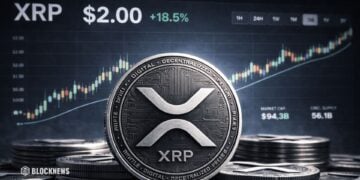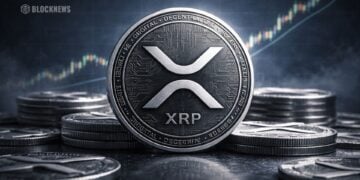- Visa wants to enable users to pay for gas fees with fiat through a credit card so they don’t have to manage a separate ETH balance just to pay for gas expenses.
- To accomplish this, Visa will leverage the ERC-4337 standard with a Paymaster smart contract.
- Using account abstraction to change Externally Owned Accounts wallets to Contract Account wallets grants them programmability to enable automated private key signatures.
A significant hindrance to crypto adoption is the complexity of crypto transactions; payments are not user-friendly or easy to conduct. Additionally, when executing trades or purchases on Ethereum, the most widely adopted blockchain network, users must pay ridiculously high gas fees (the cost of computational energy used to process a payment on a blockchain) when conducting the most straightforward transactions. Gas fees are paid in the native ETH coin, meaning that users must keep a separate balance of ETH just to cover gas expenses.
Gas fees also fluctuate rapidly, consistently changing how much it costs to initiate token swaps, NFT mints, and smart contract executions. Gas fees could be cheap one minute and then very expensive the next. Unpredictable operational costs discourage further adoption of Ethereum utility.
The Solution
To address this problem, Visa has developed a solution to enable users to pay their on-chain gas fees with fiat money through a credit card they have on file. By utilizing the ERC-4337 standard—an EIP that seeks to grant account abstraction to Ethereum user wallets, making them programmable with smart contract functionality—in tandem with a paymaster (a type of smart contract that allows flexible gas policies), users could use Visa credit cards to cover gas expenses.
Externally Owned Accounts, Private Key Communication, and Paymasters
Crypto wallets typically comprise “Externally Owned Accounts,” where the cryptographic keys generated for access to that wallet consist of an internal public key that a blockchain network uses to communicate with the wallet, and an external private key the user exclusively controls to approve communications with the wallet and sign transactions. The internal public key is derived from the external private key.
Externally Owned Accounts refer to how control of that account is external to the rest of the blockchain network; access to that wallet through its private key is beyond the network. The private key ensures every communication must be signed off on, reducing the speeds and ease users can transact through their wallet.
Account abstraction changes Externally Owned Accounts to Contract Accounts which can process and store data, making them capable of communicating with and executing smart contracts. Account abstraction allows regular externally owned account wallets to gain the capabilities of contract accounts, granting them programmability.
A paymaster integrated with a crypto wallet could manage a wallet’s private key to sponsor and facilitate onchain gas payments with fiat from an offchain source: the Visa credit card. According to Visa, this process would be accomplished through a Veryifying Paymaster and would eliminate users from needing to hold separate ETH balances just to cover gas fees.
A Verifying Paymaster enables flexible gas policies by delegating private key transaction signing to the Visa credit card on behalf of the user or wallet owner. ERC-4337 enables the Verifying Paymaster to act as an intermediary between a wallet’s private key and the Visa credit card as it coordinates the process of signing transactions using the private key to authorize gas payments.
Conclusion
The complexity and unpredictability of gas fees have long posed barriers to widespread adoption and usability. Visa addresses these challenges head-on by allowing users to pay on-chain gas fees with their familiar credit cards. This integration simplifies the process and significantly accelerates communication between the blockchain and external wallets.
By coordinating a Verifying Paymaster and the ERC-4337 standard, users can experience a seamless and efficient experience, eliminating the need for separate ETH balances and reducing the friction associated with conducting transactions on the Ethereum network. As this solution gains traction, it can welcome new and inexperienced users into the crypto ecosystem, driving forward the next phase of crypto adoption and accessibility.














